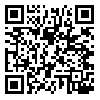Volume 10, Issue 5 (Special Issue on Educational Development 2011)
Iranian Journal of Medical Education 2011, 10(5): 896-905 |
Back to browse issues page
, ashourioun@med.mui.ac.ir
Abstract: (17223 Views)
Introduction: Ambulatory education has a great role in improving the abilities of medical students to encounter with common cases and according to Ministry regulations half of clinical education should be conducted in ambulatory seting.. This study is aimed at measuring quality of ambulatory education in Al-Zahra hospital, Isfahan, Iran. It can help to increase educational quality by recognition releif of current chalenges. Method: This study is a descriptive, cross sectional research. It was conducted by designing a questionnaire and completing it by 180 clerkship students and interns. The questionnire consist of six areas: attending physicians’ teaching quality, residents’ quality of teaching, physical environment and facilities, patients’ affair, intern presence in ambulatory setting and duration of ambulatory teaching. The validity of the questionnaire was confirmed by educational experts and its reliability was measured through a pilot study (α=0.92). Findings: The conclusions in group of interns were as following: The mean score of attending physicians’ teaching quality, residents’ quality of teaching, physical environment and facilities, patients’ affair, intern presence in ambulatory setting and duration of ambulatory teaching were: 55.2, 52, 54, 61.5, 62.7 out of 100, respectively. Coresponding of scores for was 42.3, 42.7, 45.2, 56.6, 36.1, respectively. By the way, in both groups, interns and clerkship students, the mean suitable number of patients refer to clinics with the best educational output was estimated about 10 persons per day. Discusion: In conclusion, to improve ambulatory education, attending physicians should come to clinics on time and stay for longer duration than past. In addition, physical environment and facilities of clinics should be modified according to number of stagers and interns.
Type of Study: other |
Subject:
other
Received: 2011/05/4 | Accepted: 2011/08/11 | Published: 2011/02/15 | ePublished: 2011/02/15
Received: 2011/05/4 | Accepted: 2011/08/11 | Published: 2011/02/15 | ePublished: 2011/02/15
| Rights and permissions | |
 |
This work is licensed under a Creative Commons Attribution-NonCommercial 4.0 International License. |


